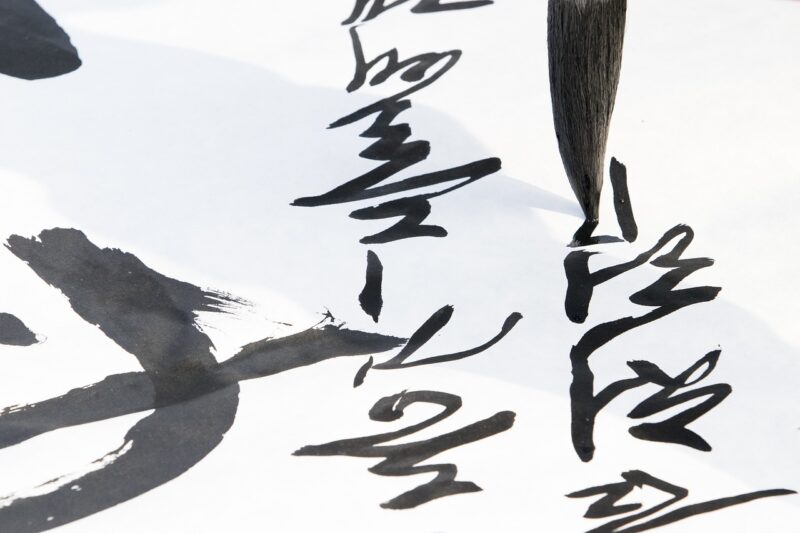The Benefits of Practicing Chinese Calligraphy for Memory and Focus
November 12, 2024

Chinese calligraphy is not just an art form; it is a discipline that has been revered for over a thousand years. The flow of the brush, the balance of the characters, and the historical significance of each stroke contribute to a rich cultural practice that many find beneficial for mental acuity. In this article, we’ll explore how practicing Chinese calligraphy can improve memory, enhance focus, and provide a pathway for mindfulness in our fast-paced lives.
1. The Art of Chinese Calligraphy
Chinese calligraphy, known as “shūfǎ” (书法), translates to “the way of writing.” It combines artistic expression with the discipline of writing, requiring practice and patience. Each character is a fusion of aesthetics and linguistic meaning, where every stroke represents a story, tradition, or thought. Engaging with this intricate art helps practitioners cultivate precision and mindfulness, the two foundational elements that enhance memory and focus.
For centuries, calligraphy has been taught as an essential skill in Chinese culture. It encapsulates history and philosophy, making it a profound practice that transcends mere writing.
2. Enhancing Memory through Repetition
Memory plays a crucial role in learning any new skill, and practicing Chinese calligraphy is no exception. The process involves repetition, which is one of the most effective methods for embedding information into our long-term memory.
When you practice writing Chinese characters, you engage different parts of your brain:
- Visual Learning: Each character comes with a unique shape and design. By repeatedly seeing and writing these shapes, you develop visual recognition skills that enhance memory retention.
- Kinesthetic Learning: The act of holding a brush and moving it across paper activates muscle memory. Over time, the strokes become second nature, allowing your brain to create stronger associations with the characters.
- Cognitive Engagement: Each character carries cultural context and historical significance. Engaging with these stories enhances cognitive understanding and memory.
Practicing Chinese calligraphy allows for an immersive learning experience where memory and creativity intersect.
3. Improving Focus and Attention
Focus is essential in any artistic pursuit, and calligraphy demands an exceptional level of concentration. Unlike typing on a keyboard, calligraphy requires careful attention to the brush’s movement, the pressure applied, and the flow of ink on paper. Here’s how calligraphy improves focus:
- Mindfulness Practice: The meditative quality of writing each character fosters a sense of mindfulness. Calligraphers often find themselves fully immersed in each stroke, making it a perfect exercise for cultivating present-moment awareness.
- Distraction Reduction: In our technology-driven world, distractions are inevitable. Engaging in calligraphy can provide a welcome break; you leave behind the digital noise and focus solely on the pen and paper.
- Enhancing Mental Discipline: The commitment to mastering the art form requires discipline. This mental resilience translates into other areas of life, where keeping focused on tasks becomes easier over time.
Overall, practicing calligraphy can serve as an effective tool for sharpening your attention span and improving cognitive performance.
4. Stress Relief through Expressive Art
Practicing art is a common method for relieving stress, and Chinese calligraphy is no different. The flowing motion of the brush, combined with the rhythmic process of writing, often leads to a relaxing state. Here are some benefits associated with stress relief through calligraphy:
- Expression of Emotion: Writing characters can be a form of emotional expression, where feelings can be channeled onto the paper, helping to release pent-up emotions and anxieties.
- A Break from Routine: Taking time to engage in calligraphy can serve as a mental reset. It provides an escape from the demands of daily life and invites a holistic approach to relaxation.
- Creative Flow: As you work on your calligraphy, you enter a state of flow. This immersion encourages creativity, allowing stress to dissipate naturally as you enjoy the process.
Stress release is crucial for maintaining a healthy mind, and calligraphy offers a unique means of achieving that.
5. Building a Connection with Culture and History
Calligraphy holds significant historical and cultural importance in China. Practicing this art form allows participants to connect with centuries of tradition and cultural heritage. The act itself is a tribute to the wisdom and creativity of past generations. This cultural engagement enriches your perspective, enhances memory through storytelling, and adds depth to the practice.
Furthermore, understanding the historical context of calligraphy can deepen appreciation for the characters being written. It becomes more than just learning to write; it transforms into a journey through time, instilling greater significance behind every stroke.
Conclusion
Practicing Chinese calligraphy is an enriching experience transcending the art itself. Through improvement in memory, enhanced focus, stress relief, and cultural connection, it offers multiple cognitive and emotional benefits. It is an ancient practice that invites modern practitioners to slow down, cultivate mindfulness, and connect with a colorful tradition that spans millennia.
To explore the profound benefits of practicing calligraphy, consider setting aside time each week to immerse yourself in this art form. Whether you’re a beginner or looking to refine your skills, practicing Chinese calligraphy opens the door to personal growth and creative expression.








